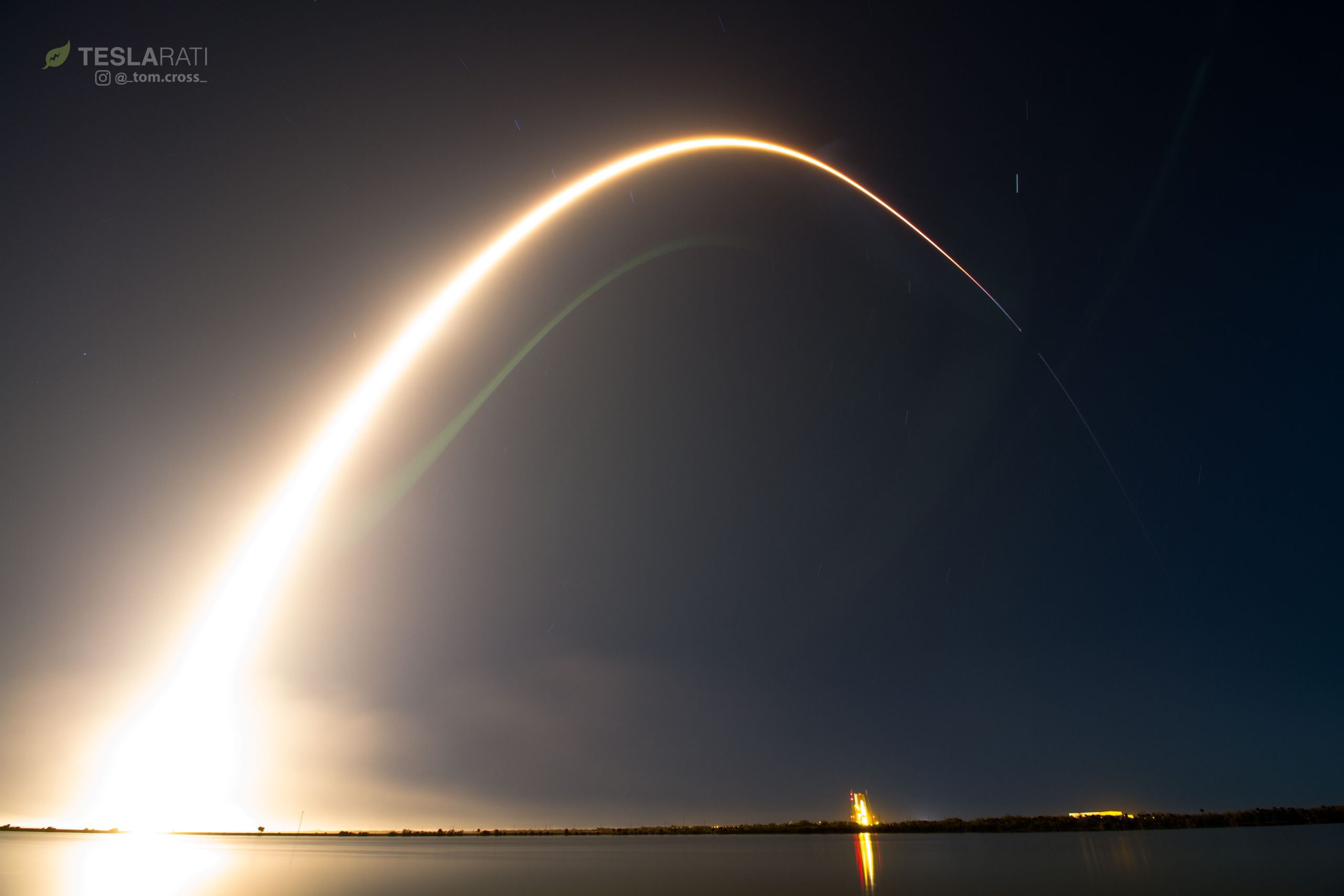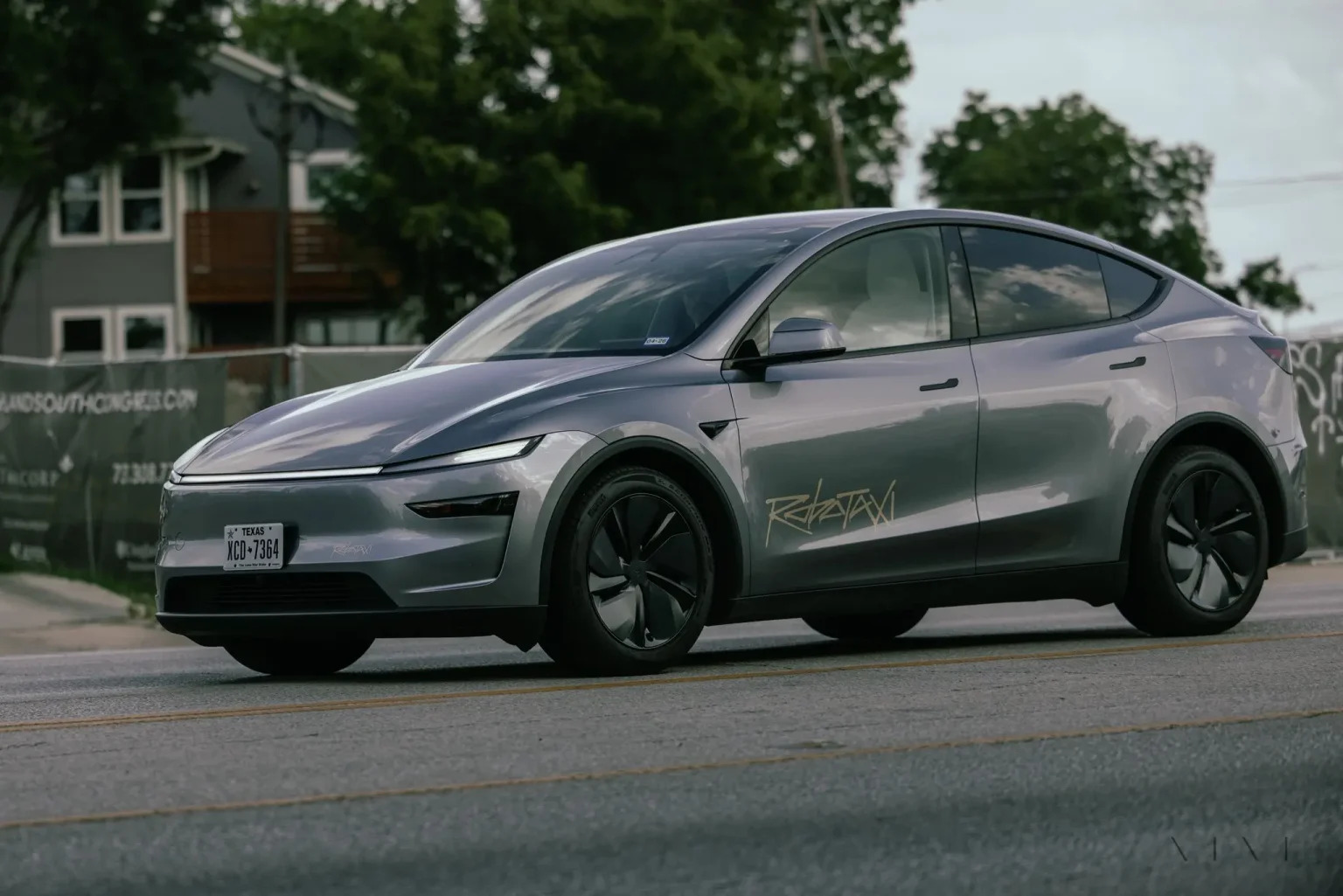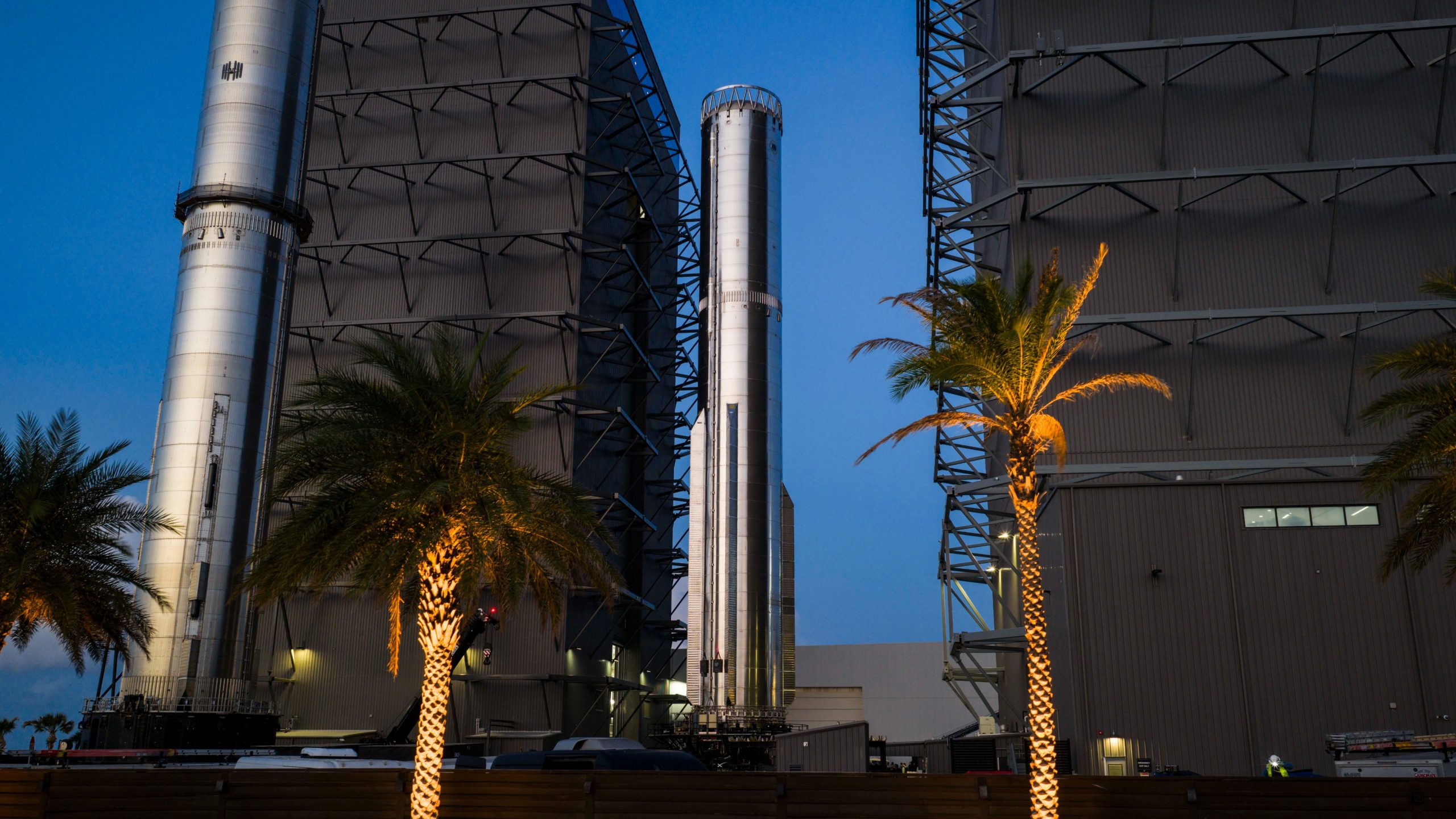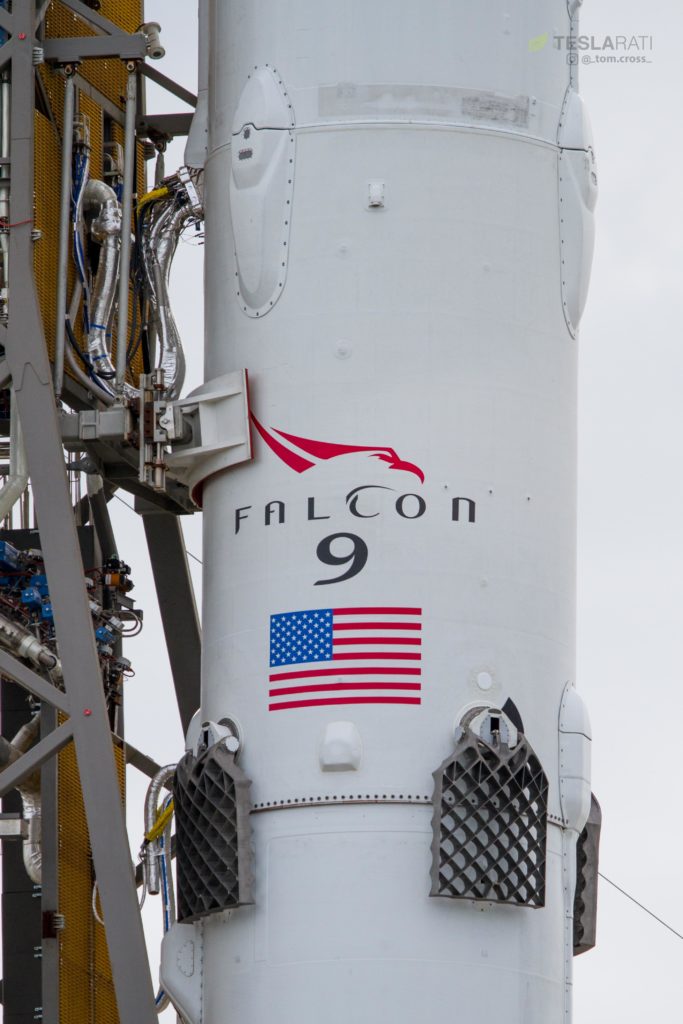

News
SpaceX tests extra-fast ocean landing, celebrates 50th launch
The happy tragedy of 1044
SpaceX has successfully completed the 50th launch of Falcon 9 a bit less than eight years after its 2010 debut, and has done so in a fashion that almost perfectly captures the veritable tsunamis the company has begun to make throughout the global aerospace industry. After a duo of delays due to hardware issues and range conflicts, this evening’s launch successfully placed Hispasat 30W-6 into a geostationary transfer orbit (GTO), where the massive ~6100 kilogram communications satellite will now spend several months raising its orbit to around 36,000 km (22,000 miles) above Earth’s surface.
Falcon 9 flight 50 launches tonight, carrying Hispasat for Spain. At 6 metric tons and almost the size of a city bus, it will be the largest geostationary satellite we’ve ever flown.
— Elon Musk (@elonmusk) March 5, 2018
Aside from becoming the heaviest commsat the company has yet to launch into GTO, the mission’s anticipated landing attempt stirred up quite a bit of intrigue and uncertainty in the spaceflight fan community. Stormy Atlantic seas, partially connected to the chaotic weather recently seen on the East coast, proved to be far too dangerous for SpaceX’s eastern recovery fleet and its drone ship, OCISLY, and they returned to Port Canaveral around 48 hours ago, under the watchful eyes of many anxious SpaceX followers. Tragically, this means that the brand new Falcon 9 booster (B1044) – originally expected to attempt perhaps the most difficult landing yet – had to be expended. Although the booster went through its paces as if it were preparing to land, it found no drone ship beneath it once it reached sea level, and subsequently dunked into the stormy Atlantic seas.
However, due to the last-minute nature of SpaceX and Hispasat’s decision to expend the booster rather than delay for better recovery conditions, launch technicians at Pad 40 simply did not have time to remove the rocket’s iconic landing legs and valuable titanium grid fins – the first time their titanium iteration has been chosen for a Falcon 9 to resist extreme reentry heating. Due to massive swells, recovery of even pieces of the expended booster – theoretically following a soft landing – will not be possible, as no SpaceX recovery vessels remained at the planned point of touchdown 400 miles off the Florida coast. Notably, following the successful inaugural flight of Falcon Heavy, CEO Elon Musk stated that upgraded titanium grid fins were “super expensive” and unequivocally “the most important thing to recover.” SpaceX’s decision to expend Falcon 9 B1044 without even sparing the time to remove the booster’s recovery hardware and titanium fins demonstrates just how focused the company is on its customers’ needs. In the case of geostationary communications satellites like Hispasat 30W-6, launch delays on the order of a few days can cause millions of dollars of financial harm to the parent company – each day a satellite spends on the ground orbit is also a day with no revenue generation, a less-than-thrilling proposition to shareholders.
- Falcon 9 1044 lifts off for its first and last time in a breathtaking display of power. (Tom Cross)
- Falcon 9 1044 vertical at Pad 40 around 72 hours before launch. (Tom Cross)
- Booster 1044 displays its number one last time. (Tom Cross)
- RIP B1044’s titanium grid fins. May they make a happy little reef at the bottom of the ocean. (Tom Cross)
B1044 sadly lost any hope at a second flight, but the data SpaceX gathered from its uniquely fast reentry and attempted soft-landing will hopefully pave the way for the recovery of Falcon 9 and Heavy boosters after all but the heaviest satellite launches. GovSat-1, a launch that saw its flight-proven booster famously survive a similarly hot landing in the ocean, was the first largely successful test of this new and experimental method of more efficiently recovering Falcons. By igniting three of its nine Merlin 1D engines instead of the usual single engine while landing, Falcon boosters can theoretically reduce the amount of fuel needed to safely land, fuel savings that can then be used to push its payloads higher and faster. However, the downsides of this approach are several. With three times as many engines igniting at landing, the margin of error for a successful landing becomes downright miniscule – the tiniest of problems with ignition, throttle control, or guidance could cause the rocket to smash into the drone ship at considerable speed. Additionally, triple the landing thrust would subject the booster to as much as 10Gs of acceleration (10 times the force of Earth’s gravity), forces that would almost instantaneously cause the average human (and even specially trained fighter pilots) to black out.
This rocket was meant to test very high retrothrust landing in water so it didn’t hurt the droneship, but amazingly it has survived. We will try to tow it back to shore. pic.twitter.com/hipmgdnq16
— Elon Musk (@elonmusk) January 31, 2018
Regardless of 1044’s untimely demise, another successful mission for SpaceX is purely positive. Happy customers make for a happy company, and SpaceX has achieved an incredible consistency of success in the last year alone. The loss of a new, potentially-reusable Falcon 9 booster is sad, but it only serves to foreshadow the imminent introduction of Falcon 9 Block 5, an upgrade hoped to realize Elon Musk’s decade-old dream of rockets that can be reused as many as 10 times with minimal refurbishment, and 100 times with maintenance. That debut could occur as early as April, just a month away.
https://twitter.com/_TomCross_/status/970900892005359617
Follow us for live updates, behind-the-scenes sneak peeks, and a sea of beautiful photos from our East and West coast photographers.
Teslarati – Instagram – Twitter
Tom Cross – Twitter
Pauline Acalin – Twitter
Eric Ralph – Twitter

Elon Musk
SpaceX issues statement on Starship V3 Booster 18 anomaly
The incident unfolded during gas-system pressure testing at the company’s Massey facility in Starbase, Texas.

SpaceX has issued an initial statement about Starship Booster 18’s anomaly early Friday. The incident unfolded during gas-system pressure testing at the company’s Massey facility in Starbase, Texas.
SpaceX’s initial comment
As per SpaceX in a post on its official account on social media platform X, Booster 18 was undergoing gas system pressure tests when the anomaly happened. Despite the nature of the incident, the company emphasized that no propellant was loaded, no engines were installed, and personnel were kept at a safe distance from the booster, resulting in zero injuries.
“Booster 18 suffered an anomaly during gas system pressure testing that we were conducting in advance of structural proof testing. No propellant was on the vehicle, and engines were not yet installed. The teams need time to investigate before we are confident of the cause. No one was injured as we maintain a safe distance for personnel during this type of testing. The site remains clear and we are working plans to safely reenter the site,” SpaceX wrote in its post on X.
Incident and aftermath
Livestream footage from LabPadre showed Booster 18’s lower half crumpling around the liquid oxygen tank area at approximately 4:04 a.m. CT. Subsequent images posted by on-site observers revealed extensive deformation across the booster’s lower structure. Needless to say, spaceflight observers have noted that Booster 18 would likely be a complete loss due to its anomaly.
Booster 18 had rolled out only a day earlier and was one of the first vehicles in the Starship V3 program. The V3 series incorporates structural reinforcements and reliability upgrades intended to prepare Starship for rapid-reuse testing and eventual tower-catch operations. Elon Musk has been optimistic about Starship V3, previously noting on X that the spacecraft might be able to complete initial missions to Mars.
Investor's Corner
Tesla analyst maintains $500 PT, says FSD drives better than humans now
The team also met with Tesla leaders for more than an hour to discuss autonomy, chip development, and upcoming deployment plans.

Tesla (NASDAQ:TSLA) received fresh support from Piper Sandler this week after analysts toured the Fremont Factory and tested the company’s latest Full Self-Driving software. The firm reaffirmed its $500 price target, stating that FSD V14 delivered a notably smooth robotaxi demonstration and may already perform at levels comparable to, if not better than, average human drivers.
The team also met with Tesla leaders for more than an hour to discuss autonomy, chip development, and upcoming deployment plans.
Analysts highlight autonomy progress
During more than 75 minutes of focused discussions, analysts reportedly focused on FSD v14’s updates. Piper Sandler’s team pointed to meaningful strides in perception, object handling, and overall ride smoothness during the robotaxi demo.
The visit also included discussions on updates to Tesla’s in-house chip initiatives, its Optimus program, and the growth of the company’s battery storage business. Analysts noted that Tesla continues refining cost structures and capital expenditure expectations, which are key elements in future margin recovery, as noted in a Yahoo Finance report.
Analyst Alexander Potter noted that “we think FSD is a truly impressive product that is (probably) already better at driving than the average American.” This conclusion was strengthened by what he described as a “flawless robotaxi ride to the hotel.”
Street targets diverge on TSLA
While Piper Sandler stands by its $500 target, it is not the highest estimate on the Street. Wedbush, for one, has a $600 per share price target for TSLA stock.
Other institutions have also weighed in on TSLA stock as of late. HSBC reiterated a Reduce rating with a $131 target, citing a gap between earnings fundamentals and the company’s market value. By contrast, TD Cowen maintained a Buy rating and a $509 target, pointing to strong autonomous driving demonstrations in Austin and the pace of software-driven improvements.
Stifel analysts also lifted their price target for Tesla to $508 per share over the company’s ongoing robotaxi and FSD programs.
Elon Musk
SpaceX Starship Version 3 booster crumples in early testing
Photos of the incident’s aftermath suggest that Booster 18 will likely be retired.

SpaceX’s new Starship first-stage booster, Booster 18, suffered major damage early Friday during its first round of testing in Starbase, Texas, just one day after rolling out of the factory.
Based on videos of the incident, the lower section of the rocket booster appeared to crumple during a pressurization test. Photos of the incident’s aftermath suggest that Booster 18 will likely be retired.
Booster test failure
SpaceX began structural and propellant-system verification tests on Booster 18 Thursday night at the Massey’s Test Site, only a few miles from Starbase’s production facilities, as noted in an Ars Technica report. At 4:04 a.m. CT on Friday, a livestream from LabPadre Space captured the booster’s lower half experiencing a sudden destructive event around its liquid oxygen tank section. Post-incident images, shared on X by @StarshipGazer, showed notable deformation in the booster’s lower structure.
Neither SpaceX nor Elon Musk had commented as of Friday morning, but the vehicle’s condition suggests it is likely a complete loss. This is quite unfortunate, as Booster 18 is already part of the Starship V3 program, which includes design fixes and upgrades intended to improve reliability. While SpaceX maintains a rather rapid Starship production line in Starbase, Booster 18 was generally expected to validate the improvements implemented in the V3 program.
Tight deadlines
SpaceX needs Starship boosters and upper stages to begin demonstrating rapid reuse, tower catches, and early operational Starlink missions over the next two years. More critically, NASA’s Artemis program depends on an on-orbit refueling test in the second half of 2026, a requirement for the vehicle’s expected crewed lunar landing around 2028.
While SpaceX is known for diagnosing failures quickly and returning to testing at unmatched speed, losing the newest-generation booster at the very start of its campaign highlights the immense challenge involved in scaling Starship into a reliable, high-cadence launch system. SpaceX, however, is known for getting things done quickly, so it would not be a surprise if the company manages to figure out what happened to Booster 18 in the near future.












